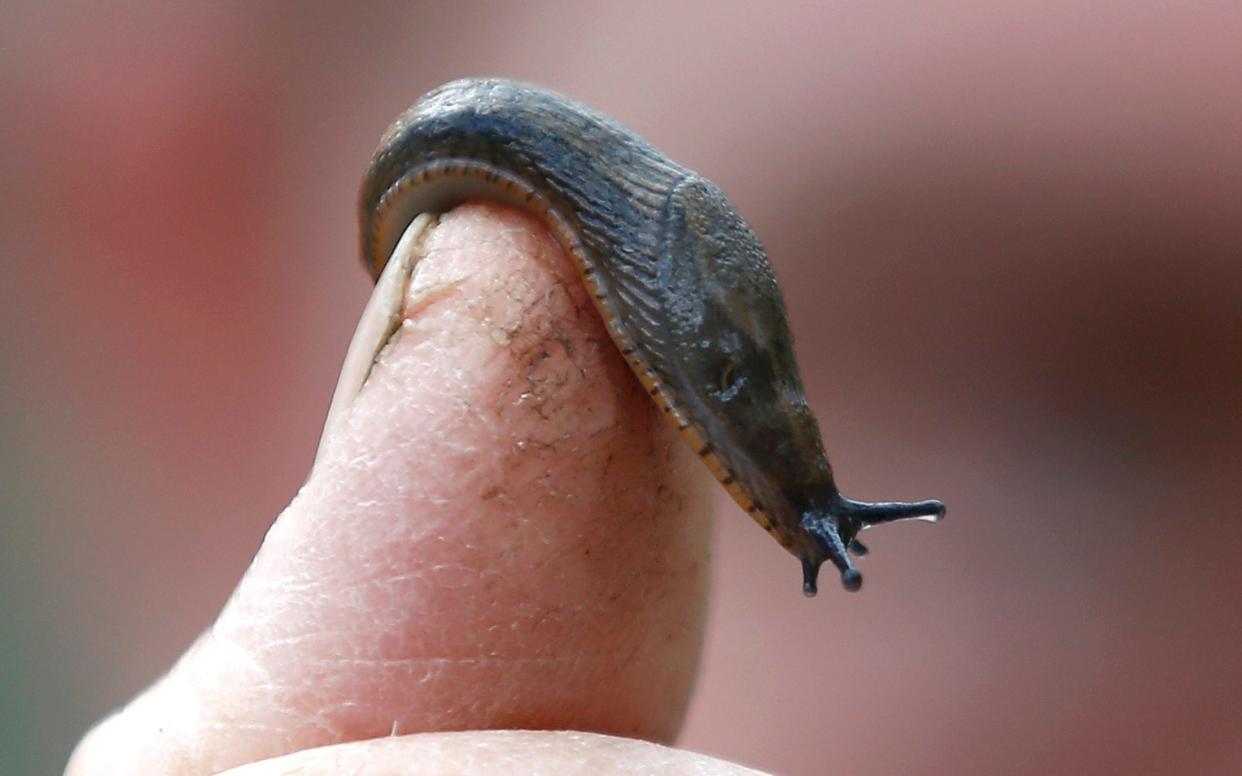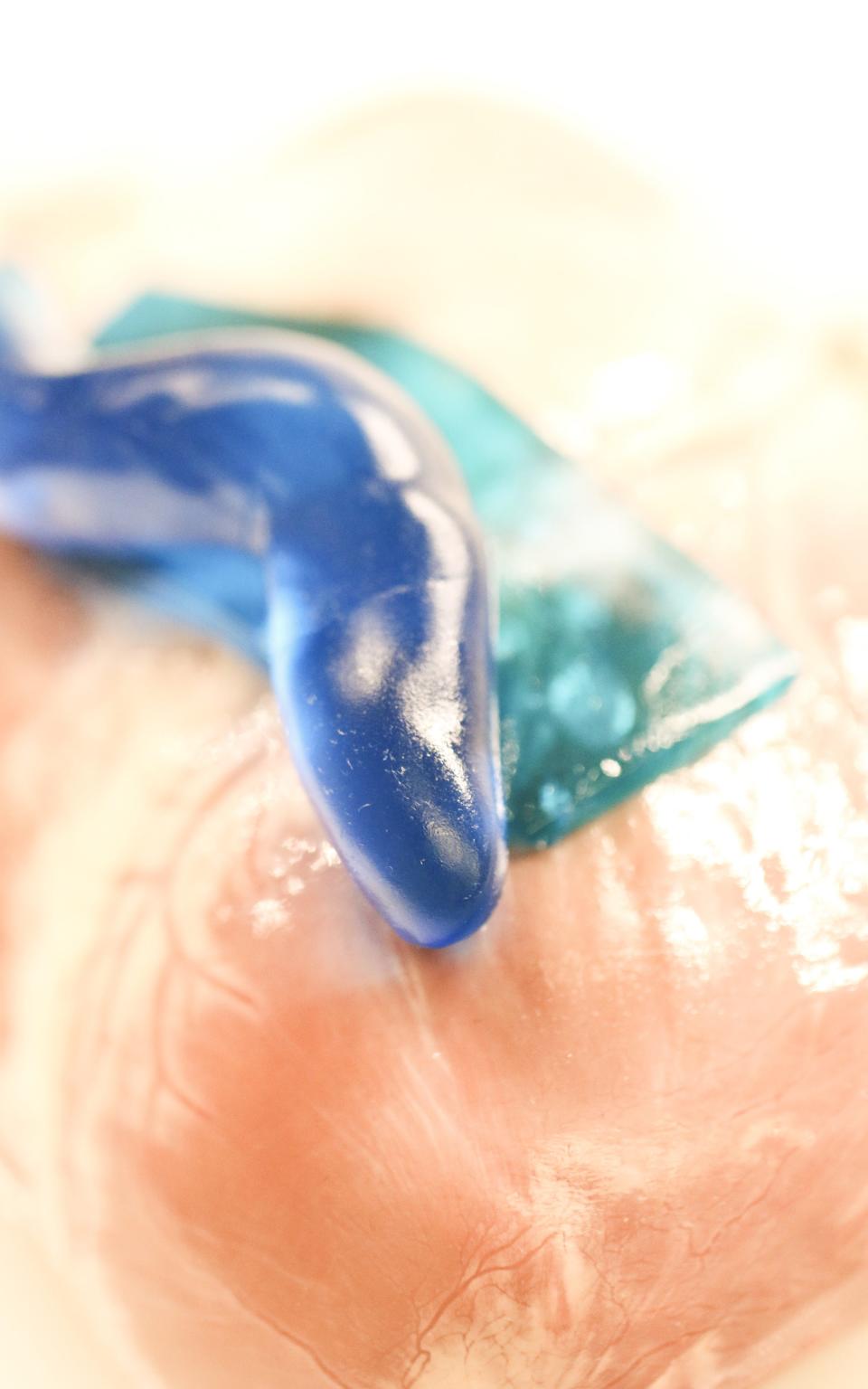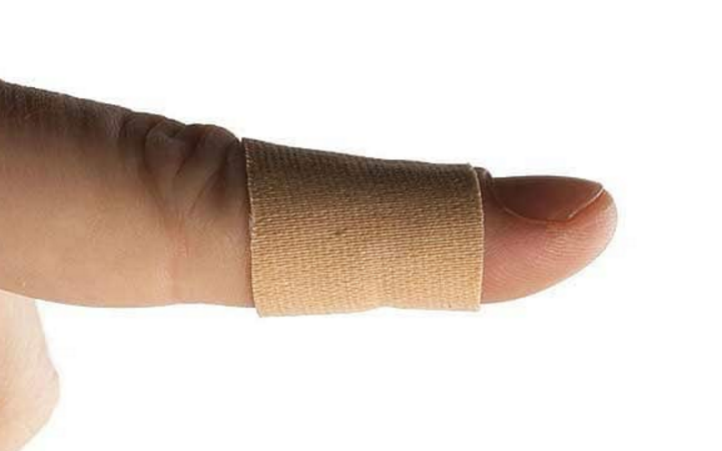Slimy slug mucus inspires glue which can mend internal injuries without stitches

Slimy slug mucus has inspired a new glue which can stick to slippery surfaces in the body and could end the need for stitches.
For decades, scientists have attempted to invent an adhesive which can repair tears in bodily tissues, which are often covered in blood.
Super-glue has been used for decades to close wounds, but it has never been able to help with internal injuries because it is too toxic to cells and will not stick to tissue.
Now researchers at Imperial College London and scientists in the US have created a super-strong glue which is a tough as cartilage, but which can cling internal organs.
The design is based on slug mucus from the Dusky Arion species, which oozes a special kind of slime which prevents predators prying it from a surface.

The slug slime is so effective because it contains positively charged proteins, which are attracted to the ground, or wall.
To create a similar mucus, the scientists made a water-based gel with positively charged molecules protruding from the surface, which create a static attraction with the negatively charged cells in the body.
"Nature has frequently already found elegant solutions to common problems,” said Donald Ingber, Professor of Vascular Biology at Harvard Medical School.
“It's a matter of knowing where to look and recognizing a good idea when you see one.
“We are excited to see how this technology, inspired by a humble slug, might develop into a new technology for surgical repair and wound healing."

The researchers tested their glue on dry and wet pig skin, cartilage, arteries, and tissue from the heart and liver, and found that it bound to all of them.
The adhesive also maintained its bonding when implanted into rats for two weeks, or when used to seal a hole in a pig heart that was mechanically inflated and deflated and then subjected to tens of thousands of cycles of stretching.
It also caused no tissue damage when applied to a liver hemorrhage in mice, which would usually be closed by stitches.

Researchers believe it could be turned into a sticky patch, like a sticking plaster, that can be cut to size and applied to tissue surfaces or as an injectable solution for deeper injuries.
"This family of tough adhesives has wide-ranging applications," said Dr Adam Celiz, of the Department of Bioengineering at Imperial.
"We can make these adhesives out of biodegradable materials, so they decompose once they've served their purpose.
“We could even combine this technology with soft robotics to make sticky robots, or with pharmaceuticals to make a new vehicle for drug delivery."
The team of researchers also included the Wyss Institute for Biologically Inspired Engineering and the John A. Paulson School of Engineering and Applied Sciences (SEAS).
It was was published in the journal Science.

 Yahoo News
Yahoo News 
